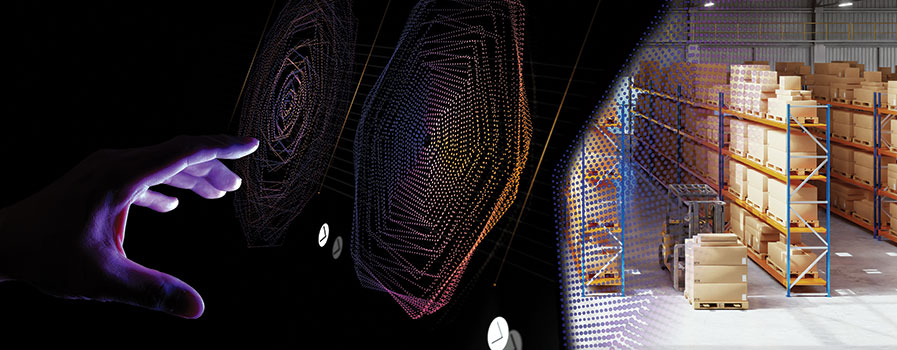Artificial Intelligence in the Warehouse

Artificial intelligence (AI) is not magic. From my perspective and in the context of distributors, AI is a combination of software and data to solve and prevent problems. The software is usually a distributor’s ERP (Enterprise Resources Planning) system, modified to include AI logic and formulas, potentially interacting with CRM (customer relationship management) and e-commerce systems, and using data.
The data is a repository of information that can originate in the ERP database, from an AI request, perhaps from text messaging, emails, possibly enhanced via an internet search, and maybe other sources.
So, what is AI? Software plus data. Simply put, AI is machine “learning.”
AI in the warehouse
Here are two examples where AI could help improve the accuracy and efficiency of your warehouse. Notice that AI combines data (“synthesizes”), makes a decision (“interprets”), and makes a recommendation (“projects”).
- Distributors and wholesalers want “high” warehouse accuracy. One definition of accuracy is calculated as follows: First, calculate the number of mistakes in a week divided by the number of lines picked and packed in that week, and call it ER; then calculate 1- minus ER, and call it AD; finally, multiply AD by 100, and the result will be the percentage accuracy. It’s almost impossible to achieve 100% accuracy because the cost would be very high. Some preventative measures would not be practical. So, distributors want to know the level of accuracy they should try to achieve.
AI might recommend a target accuracy level by using the information found on the internet or based on a formula the company develops based on historical data. Using picking as an example, for each item and pack size in the warehouse (e.g., floor wax), the software would search the internet for reported levels of accuracy. If enough data for an item and pack size is found, the software will calculate an average accuracy level and average variation from the average accuracy level. For a preselected product group, sub-group, or vendor, if a suitable level is calculated and the variation is acceptable, AI would display the calculated average and any actual service level calculated by the ERP software, and the difference.
- Determining if a worker is as productive as desired requires standards (e.g., pieces/cartons per hour) for each job (e.g., picking) and shift. This requires captured data for each worker, such as date, clock times in and out, and cartons or pieces picked; all of which are captured via barcode scanning. Manually calculating those standards is time-consuming, but AI might determine those standards in seconds.
In this example, for each shift, AI-enabled software would search the internet for reported picking standards. If enough data for a shift is found, the software will calculate an average picking rate and average variation from the average picking rate. If a suitable rate is calculated and the variation is acceptable, AI would display the calculated average rate—the standard (standards by type of item, e.g., bathroom tissue, are too difficult to obtain from the internet because too many warehouse-specific factors affect that level of standards).
AI could also display the actual pick rate and the difference from the standard (amount and percent) for each worker and shift within a pre-specified date range. A manager would decide whether or not to store an AI-calculated rate, by shift, or store them all.
Improving operational efficiency without AI
For most distributors, the practical and effective use of AI is coming but may not be here yet. Until then, here are a few tips for achieving high warehouse accuracy:
- Organization. Store items picked the most often closest to the packing area, and even where items are stored by “family” or vendor line, store the fastest moving ones closer to the front of the section.
- Receiving. If the unit of measure displayed in PO/put away data is not the same as that on the corresponding packing list, the receiver should note that discrepancy on the packing list or record it via a scanner.
- Put away. If there is no permanently assigned storage location for a newly received item or an alternate location is used, the person doing put away must record the selected location as soon as possible.
- Pull down. The time to replenish picking locations from bulk/overflow is before daily picking begins, regardless of whether someone uses a printed pull-down list or displays data on a barcode scanner. Pulling down and picking at the same time leads to mistakes.
- Picking. To minimize picking time, items must be picked in a sequence that minimizes walking time. Rushing to make up for long travel distances causes mistakes.
- Packing and quality control. To avoid repeating mistakes already made, an order checker should not be the same person who picked the order being checked.
- Loading. To reduce mistakes, the smaller and lighter items and packed cartons of an order could be placed on rolling shelves that are used only for staging outbound orders. Each rolling shelf can be pushed into or near the appropriate truck.
AI in the warehouse may be worth it in improving your accuracy and productivity, optimizing operational efficiency. But it is not magic and can come with some challenges. Therefore, do your due-diligence and carefully weigh the benefits and challenges of AI, and make the decision if it is suitable for your warehouse now, or in the future.
















